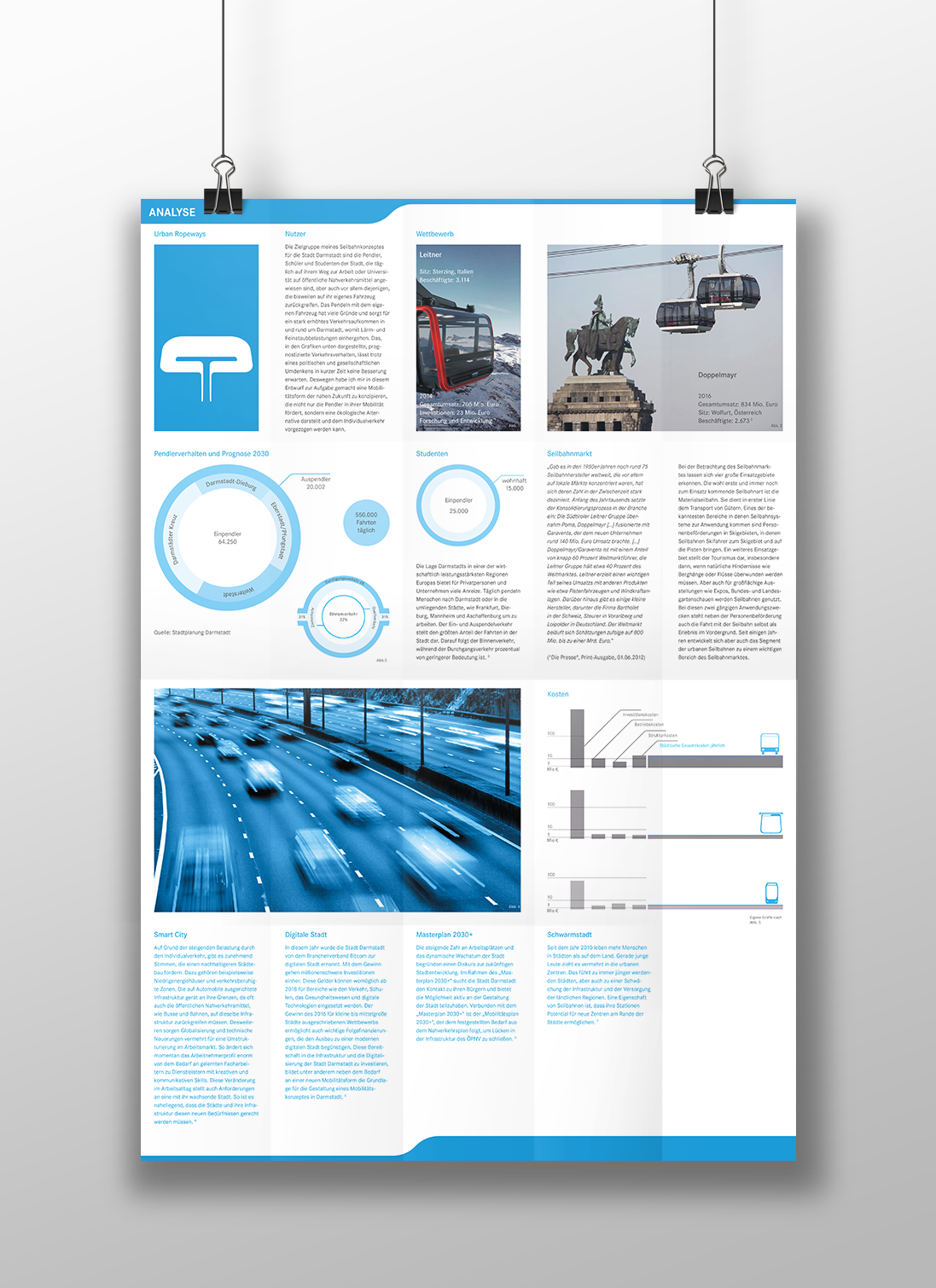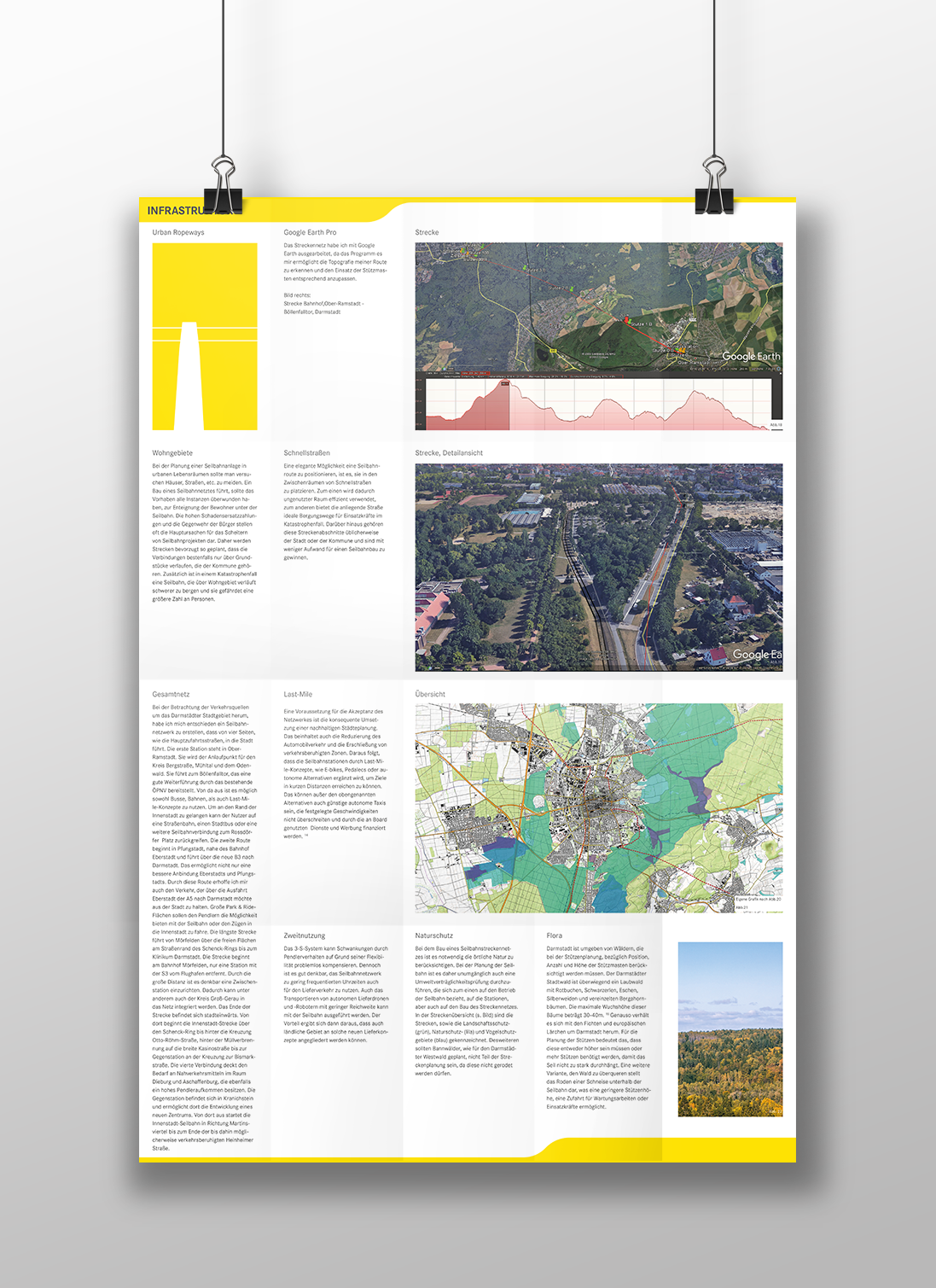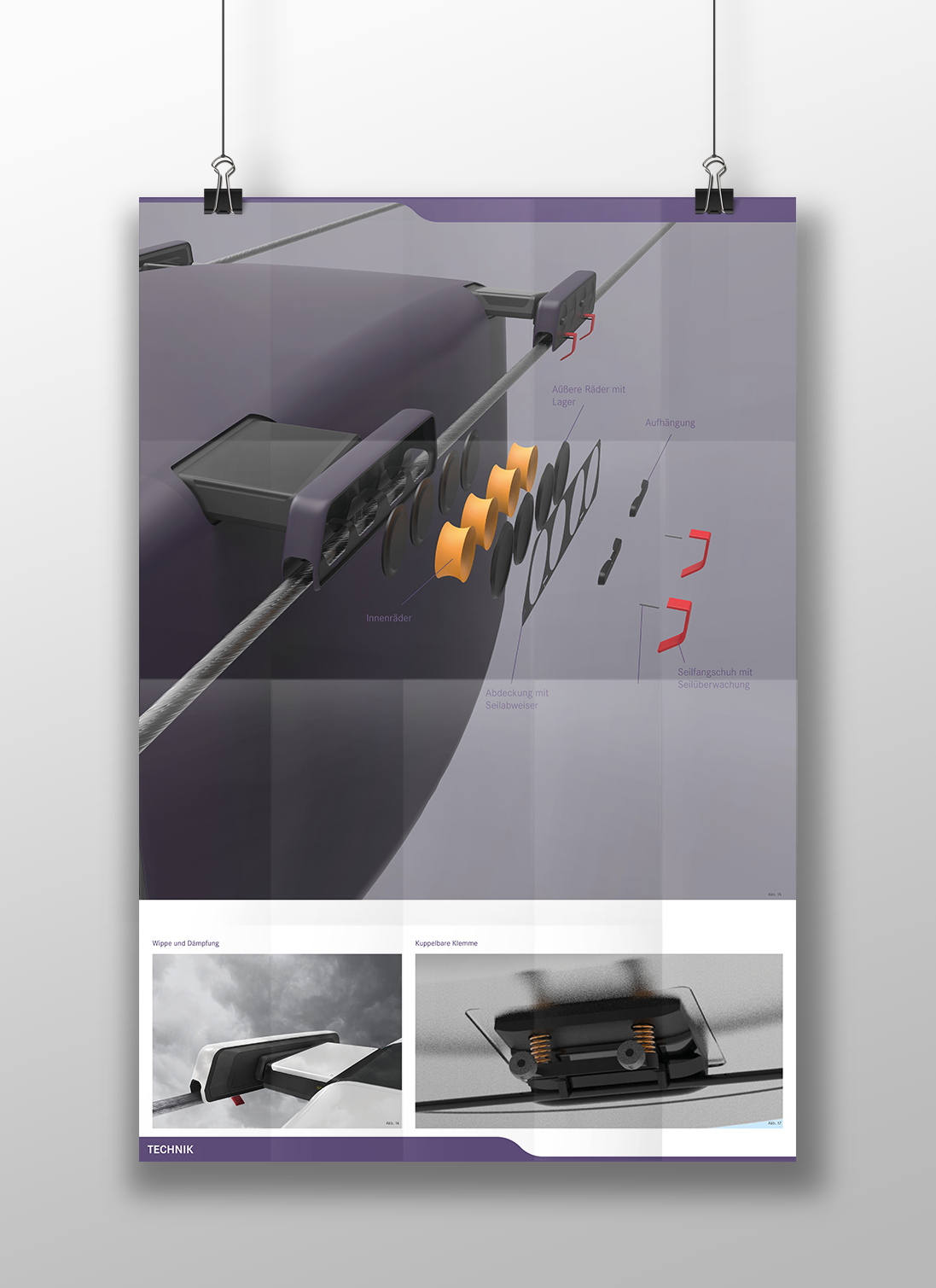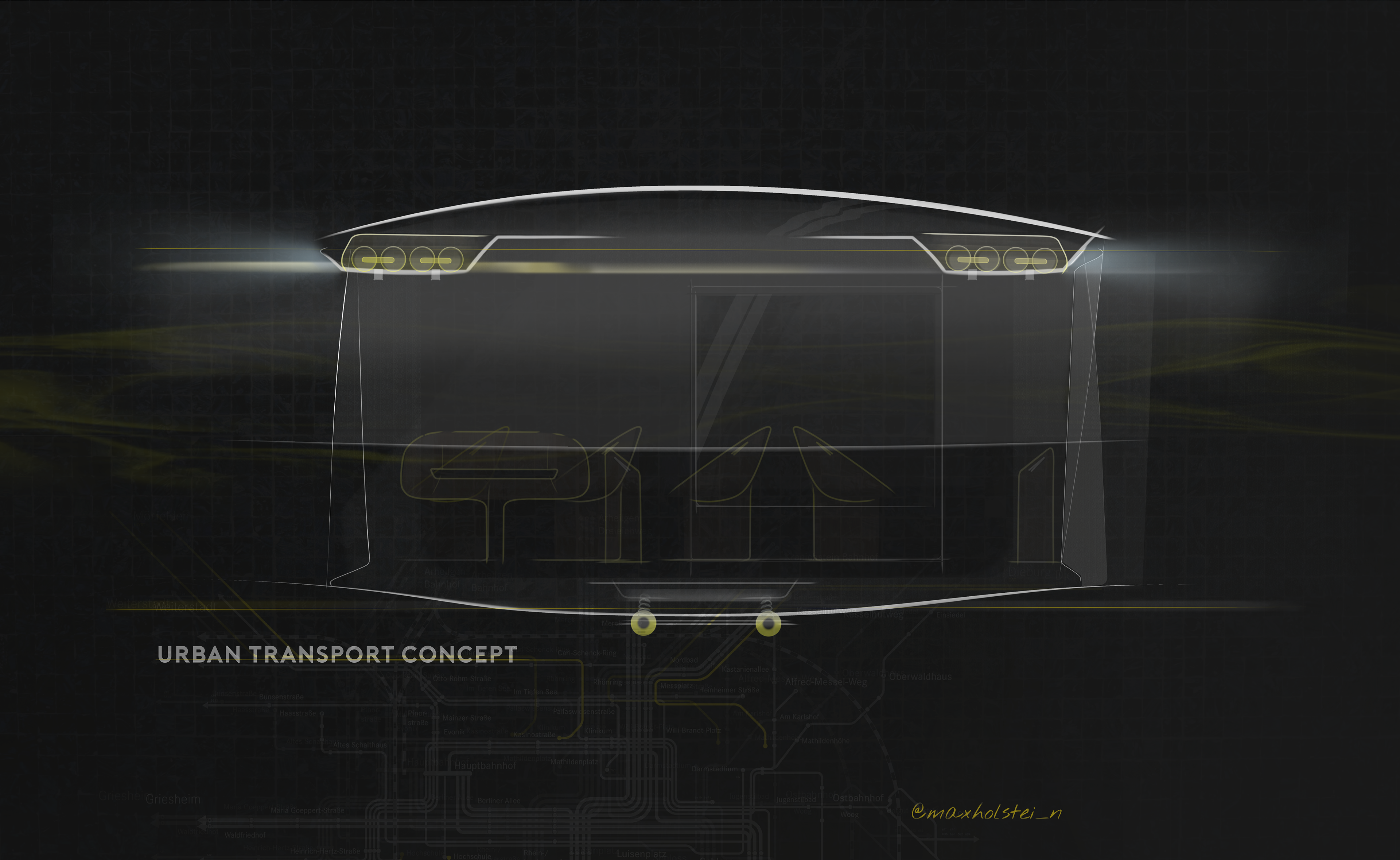Urban Transport Concept
Cable Car Concept | Design by Max Holstein
Design University Project 2017. Supervised by Prof. Tom Philipps.
Motivation
In designing this mobility concept, I was not only interested in creating an alternative to public transport, but also in designing a means of transport that expands the infrastructure of a growing city and has the potential to be a popular alternative to the automobile.
Hessen's location in one of the most economically dynamic regions in Europe offers many advantages for private individuals and companies. Every day, people commute to Darmstadt, Frankfurt or the other surrounding cities to work. The resulting challenge of public transportation was the reason for me to develop a concept in my project to expand local transportation without having to use existing infrastructure.
Research
Traffic Analysis
At first it was important to analyse the traffic situation of the respective city (in this case City of Darmstadt).
This includes traffic analysis and traffic prognosis, user behaviour and trends in terms of public transport, urban growth and potential. The second area is the infrastruktur: Which infrastructural measures make sense?
Infrastructure
In addition, it is important to guide the planned routes through areas where both nature and local residents are least affected. Furthermore, rescue access routes, mast heights and distances and much more must be considered.
Cable Car Systems
Subject area three deals with the technical aspects of the ropeway system. For example the examination of existing systems, considerations for further development and improvement, station sequence, etc.
Aesthetical Demands
This is followed by the design of the cabin, which consists mainly of two core areas. The user experience and user needs in the cabin and the external impact on the environment, other road users, land- and cityscape, functional signs, aesthetic quality.








Cabin Design
The interior offers 10 seats and 5 standing seats, as well as two bicycle stands with space for wheelchair users and strollers. Spacious benches with dividers and large open spaces increase comfort and privacy.
Challenge
In general it was very important to present an alternative to the automobile and to offer at least the same advantages as privacy, safety and comfort. Only then I see a chance that people switch from cars to public transport and help to reduce pollution in cities.
Zoning
In addition to the advantages of punctuality and speed, in order to convince people to integrate ropeway systems into local public transportation in the long term, I have been working intensively on the pain points and needs of commuters.
This is reflected in the zoning of the interior in
A) Functional Entrance
B) Panorama seats
C) Homelike Materials and curtain like rear windows
D) Privacy Area
Technical Specifications
Due to the high flexibility of detachable cabins, the modular design and the low construction and operating costs, cable cars offer great potential to expand public transport.
3S-Plus
The 3S-Plus System is a concept for the continuation of the three-cable car system. With this concept, the cabin is located between the ropes, similar to a rope rider or the rope clamp. The positioning between the two carrying ropes and a centric pull rope allows an even higher wind stability and a better weight distribution on the carrying ropes. This can possibly lead to a longer service life of the ropes to be mounted. The horizontal, cushioning gondola arms resting at four points also make it possible to make cable cars appear as safe as they are.

Orientation
As you can see, at first glance there is no direct orientation of the cabin. The main lines tighten and rejuvenate the shape to the front and back equally. The reason for this is that - in contrast to the automobile - the acceleration of the cable car does not play any specific role. The advantage of the cable car is a constant speed over traffic jams and other delays.

